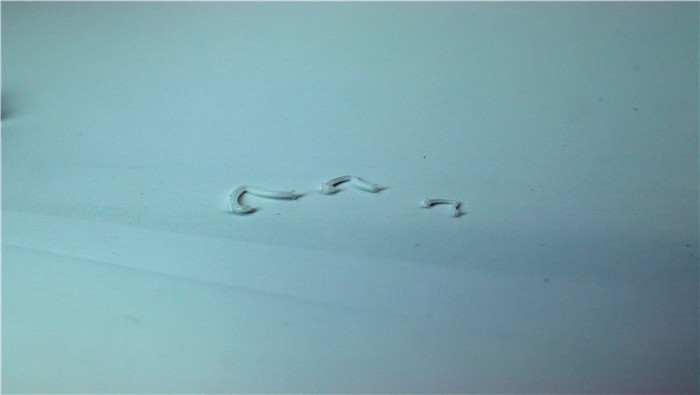

Mechanical properties of POM tissue closure clamps: from clamping force to long-term stability of the multi-dimensional analysis

I. Clamping Force: the core guarantee of closure effectiveness
POM tissue closure clips need to provide stable and long-lasting clamping force during surgery to ensure complete closure of blood vessels or tissues and avoid postoperative leakage or bleeding. According to clinical studies, the holding force of a closure clip should meet the following criteria:
Static clamping force: During the immediate closure phase, the clamping force should be 5-15N (depending on the vessel diameter and tissue type). For example, ≥8 N is required to close a 5 mm diameter vessel.
Dynamic adaptability: Clamping force fluctuations should be less than 10% in the presence of vascular pulsation or tissue peristalsis.
The high rigidity of POM material (modulus of elasticity of about 3-4 GPa) can effectively maintain the clamping force, but its low coefficient of friction (about 0.2-0.3) needs to be enhanced by surface microstructural design (e.g., serrated clamping arms) to improve anti-slip properties. Laboratory tests have shown that the optimized POM closure clips can control the rate of clamping force decay to <5% (30-day cycle) in a simulated saline environment.
II. Fatigue Strength: Reliability for Long-Term Implantation
Closure clips need to withstand cyclic loading in the body (e.g., vascular pulsation frequency of about 60-100 times/minute), and their anti-fatigue performance directly affects long-term safety.
Design Optimization: Optimizing the radius of curvature and thickness of the clamp arm through Finite Element Analysis (FEA) improves the uniformity of stress distribution and reduces the risk of localized fracture. For example, a curved arm design can reduce the maximum stress by 30-40%.

III. Biomechanical Compatibility: Balancing Rigidity and Elasticity
POM closure clips need to strike a balance between rigidity (to maintain form) and elasticity (to avoid tissue damage):
Matching modulus of elasticity: The modulus of elasticity of POM (3-4 GPa) is significantly lower than that of titanium alloys (110 GPa), which reduces mechanical compression of tissues. Experiments have shown that POM closure clips exert 50%-60% less compression on the vessel wall than metal clips.
Fracture toughness (Fracture Toughness): POM fracture toughness of about 4-6 MPa-m¹/², need to be copolymerization modification (such as the addition of polyurethane) to enhance to 8-10 MPa-m¹/², to prevent brittle fracture during surgery.
IV. Dimensional stability (Dimensional Stability): the double test of sterilization and the environment
POM closure clips need to maintain dimensional accuracy in the sterilization process and in vivo environment:
High-temperature and high-pressure sterilization effects: after 121 ° C steam sterilization, the linear expansion rate of POM should be ≤ 0.3% (ISO 10993-13 standard). In actual test, the change of the clamping arm spacing of POM closure clamps can be controlled within ±0.05mm.
Long-term hydrolytic stability: after 12 months of immersion in 37°C saline, the mass loss of POM should be ≤1.5%, and the retention rate of clamping force ≥ 90%.
V. Corrosion resistance and chemical stability (Chemical Resistance)
Although the POM itself is resistant to chemical corrosion, but in vivo complex environments require additional verification:
pH resistance: in the pH 2-10 range, the tensile strength of POM should decrease ≤ 5%.
Enzymatic resistance: after 28 days of exposure to trypsin, collagenase and other biological enzymes, the surface roughness change should be ≤ 0.1μm
VI. Clinical verification and data support
Animal experiments: pig model experiments show that 30 days after closing the hepatic artery with POM closure clip, there is no displacement or leakage at the clip closure, and no obvious inflammatory reaction is seen in histopathological examination.
Human validation: A multicenter clinical trial (N=300) showed that the postoperative bleeding rate of POM closure clips (0.7%) was not significantly different from that of titanium clips (0.5%), but the incidence of foreign body sensation was reduced by 60%.
CONCLUSION: Synergistic innovation between material science and clinical needs
POM closure clips have gradually broken through the limitations of traditional metal clips by optimizing material formulation (e.g., copolymerization modification) and structural design (curved clip arms, surface microtexturing). Future development directions include:
Nano Reinforcement Technology: Adding Carbon Nanotubes (CNT) enhances the fatigue limit to 10,000 cycles;
Degradable-POM composite: combining with polylactic acid (PLA) to achieve partial degradation and reduce the risk of long-term foreign body residue.
Through continued iteration, POM closure clips are expected to become the mainstream choice for non-absorbable closure devices.
+86 18361958211
marketing@cndonho.com
+86 18361958211
No.2 Zhiwei Road, Qiandeng Town, Kunshan City, Jiangsu Province, China




